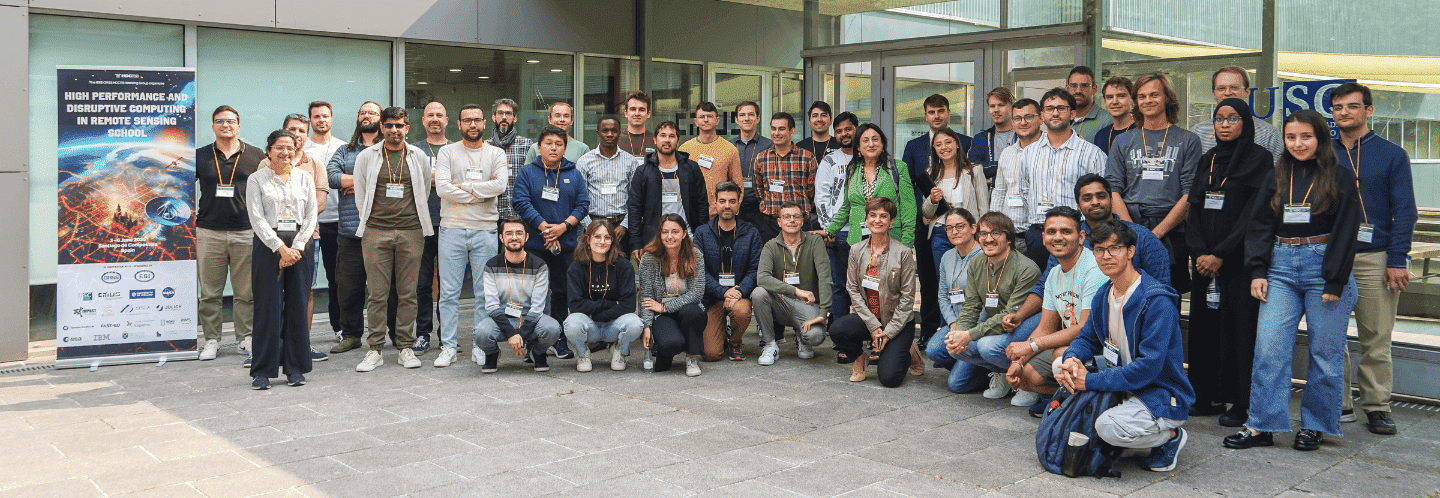
The CiTIUS hosts for the second consecutive year the prestigious IEEE Remote Sensing School, with the presence of NASA, Google, and IBM
The Singular Center in Intelligent Technologies of the University of Santiago de Compostela (CiTIUS) is the venue for the fifth edition of the 'High-Performance and Disruptive Computing in Remote Sensing' school.
Santiago de Compostela hosts from June 3 to 6 the fifth edition of the International School 'High Performance and Disruptive Computing in Remote Sensing'. The event is organized by the Working Group High Performance and Disruptive Computing in Remote Sensing of the Technical Committee on Information Technology in Earth Sciences (ESI TC) of the GRSS, the IHPC Simulation and Data Lab Remote Sensing, and the CiTIUS (Singular Research Center in Intelligent Technologies), under the leadership of CiTIUS senior researcher Dora Blanco Heras. This initiative materializes under the auspices of the European Union, which co-finances the center's activities through the Galicia Feder Program 2021-2027.
High performance and disruptive computing in remote sensing are two crucial areas for handling the immense data volumes generated by modern remote sensing technologies. These advanced computational methods allow for efficient processing, analysis, and interpretation of remote sensing data, which is vital for applications in areas with major challenges such as environmental monitoring, disaster management, or climate research.
The course attracted twenty-seven students from various countries around the world, half of whom received partial funding from IEEE GRSS to attend. The program also includes a guided tour of the Galicia Supercomputing Center (CESGA), which houses among its facilities the largest public quantum computer in southern Europe, as well as a tour of the city's historical areas.
The primary objective of this school is to acquaint participants with advances in parallel and scalable methods using cutting-edge computing technologies in their application to remote sensing. Furthermore, it offers an invaluable opportunity for students and young professionals to connect with established researchers in the field, thus fostering interdisciplinary collaboration in HDCRS research.
The school's curriculum will consist of different sessions organized into three major themes: the features offered by Google Earth Engine for Earth Observation, large-scale AI focusing on Foundation Models and Large Language Models developed by NASA and IBM, and Quantum Computing for Geosciences and Remote Sensing. These presentations will be available a few weeks after the course, through the IEEE GRSS YouTube channel.
A large number of distinguished speakers will participate in the school, including: Manil Maskey, from NASA; Radha Pyari Sandhir, Albert García Fernández, Thomas Brunschwiler, and Johannes Jakubik, from IBM Research; Gabriele Meoni and Alessandro Sebastianelli, from ESA; Emma Izquierdo-Verdiguier and Eric Smit, representing Google; Lois Orosa, from CESGA; Gabriele Cavallaro, from the University of Iceland and the Jülich Supercomputing Centre; and Dora Blanco, from CiTIUS.
More information about the course and its program at HDCRS Working Group.
About the HDCRS working group
High Performance and Disruptive Computing in Remote Sensing (HDCRS) is a working group of the Technical Committee on Information Technology in Earth Sciences of the IEEE GRSS, dedicated to advancing this field through collaborative research and cutting-edge technological applications.
